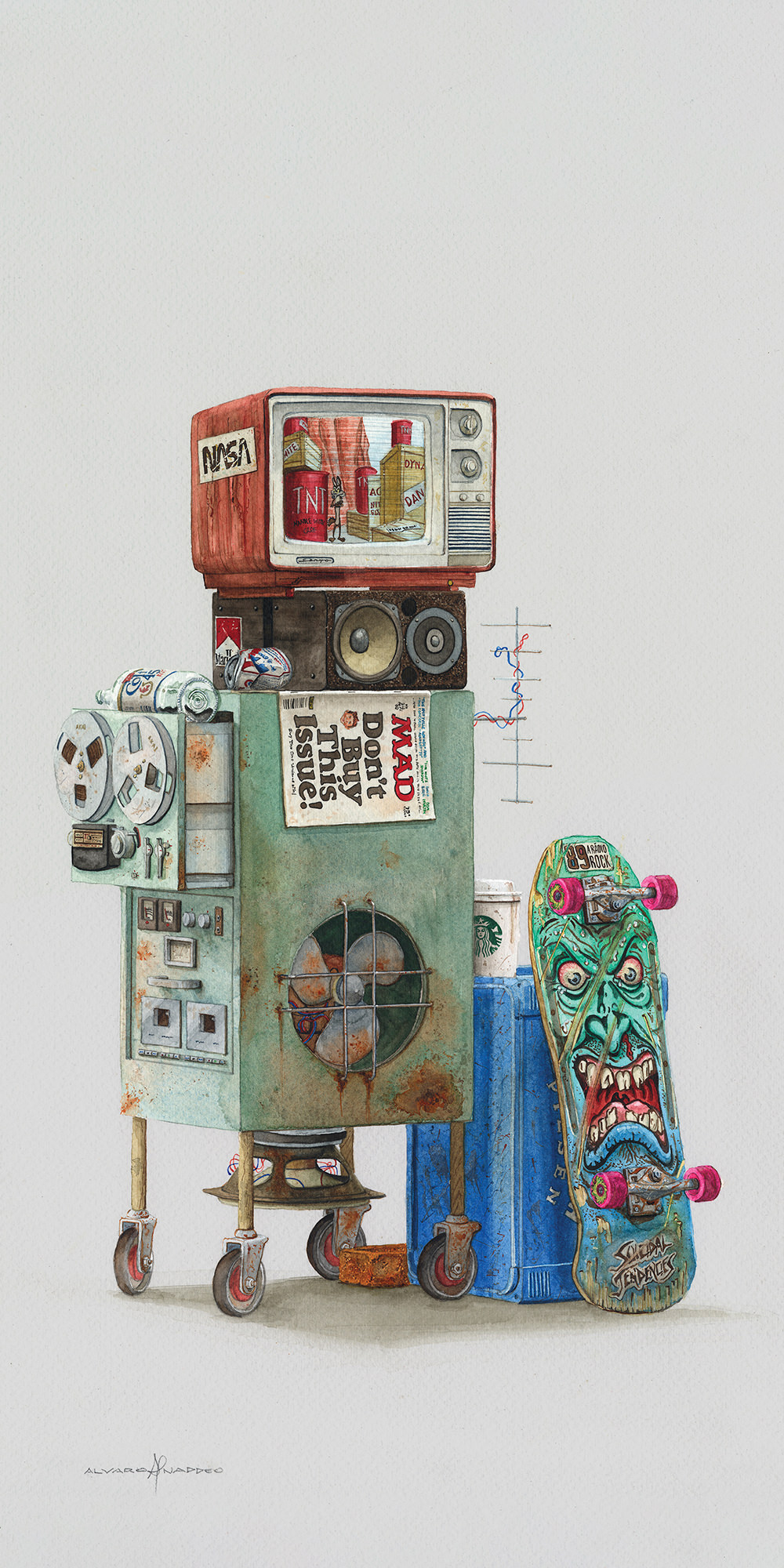The first time I went into a “real” studio, the engineer had me sing into a Neumann U 87 and then quickly got inside my head about mic technique, making for a less than stellar performance. It was an unfortunate moment to try and learn while paying $50 an hour (a princely sum in the ‘90s), and as a teenager, I was hardly ready. In hindsight, I don’t blame the mic, I blame Lawrence, the ponytailed engineer.
Flash-forward a decade or so, and I’d scraped together a tiny budget to make a record with some of my favorite people. We rented a Neumann U 87 to run through the Quad Eight Electronics preamp I’d scored on eBay. That mic and preamp combo netted me some of the best vocals and acoustic guitar sounds I’d ever recorded. I still have the mic pre, and now, thanks to the good folks at Serrano Audio, I’ve got another “87” to play with.
The first thing you notice when you take the Serrano 87 out of its wooden case is that the body and grill are reminiscent of, if not precisely resembling, a real U 87. Some clones take more license here, but I prefer the classic look. The thread-on shock mount is a nice aesthetic touch that’s quite sturdy in use. The mic features a K87 capsule that’s “made by hand, one at a time,” a custom-made transformer modeled after the BV-13 found in the Neumann U 87 i, Styroflex capacitors, and a replica 87 i circuit with an original 2N3819 FET transistor. I mention all of this because Serrano 87 sounds as if it was made by someone who did their homework. The feature set will also look extremely familiar (pad, low cut filter, as well as cardioid, figure 8, and omni polar patterns) – there’s a reason why the U 87 is probably the most recognized studio mic out there, short of the humble SM57.
Here’s the thing, I like this mic even better than I remember liking actual U 87s I’ve used in the past. Granted, my memory of the Neumann I sang into as a teenager is blurry at best, but there have been several others in my orbit since. I expected the Serrano 87 to be a tad harder sounding, but this new mic is really sweet. It has a flattering upper midrange, so much so that I almost like my own vocals on it. This mic is intentionally tuned darker than you can expect from a modern U 87 Ai, and that may be where some of the hardness I was anticipating failed to show up. Carlos Serrano told me he didn’t want to make a mic that was merely “inspired” by the original, he wanted to meticulously recreate the best version of the real thing.
No one likes their own voice, right? Who hasn’t cringed at their voicemail greeting? Case in point, my across-the-street neighbor is the insanely talented singer-songwriter, Sean Hayes. Sean’s voice is straight-up special. So, imagine my surprise when I pop by one day and he’s got his voice high-passed at 3 kHz. “I did that to give myself a break from my voice while I was working on the arrangement,” he said. It’s as if George Clooney told you he doesn’t like to look in a mirror. Neither do I George, neither do I.
Sean was kind enough to let me bring the Serrano 87 by his place. We set it up, then captured him singing and playing guitar through a BAE 1073. Here again, the Serrano 87 had this low mid heft that I was loving through my preamp – it was inviting, without sounding muddy. The acoustic guitar, while secondary to the test, still sounded present and musical. Though the term “warm” has become co-opted lame pro audio marketing speak, I honestly felt that the Serrano 87 was “warmer” than the popular transformer-balanced tube mic I own. And it’s definitely warmer than the 87-ish Michael Joly [Tape Op #39] modded MXLs I own – I don’t rate those highly for vocals, but they rule on overheads.
I wanted to see how much of that euphonic low mid goodness traveled from pre to pre. On the Quad Eight and the BAE, it was well represented. When we plugged it into Sean’s Metric Halo pres and made another pass, some of the pillowy goodness fell away, but the transients of the guitar were more articulate. The mic still had the classic upper midrange presence that I associate with the golden age of record making, coupled with faster – albeit less pronounced – low mids. The sound seemed smaller than the BAE version when level matched, but both were outstanding and potentially useful.
The Serrano 87 is one of the most impressive new mics I have used in a long time, irrespective of its extremely reasonable price. The Neumann U 87 has a reputation for being good on most any source. I expected the Serrano to succeed or fail by this standard, and it definitely can be used on a host of sources. The mic stood up extremely well on both acoustic guitar and percussion. But what I didn’t expect was that it’s the best vocal mic I’ve found for my own voice, and it worked excellent for Sean’s voice too – better than the aforementioned tube mic. I’m definitely picking one up, and I’d advise anyone looking at large diaphragm condensers to consider the Serrano 87.




_disp_horizontal_bw.jpg)